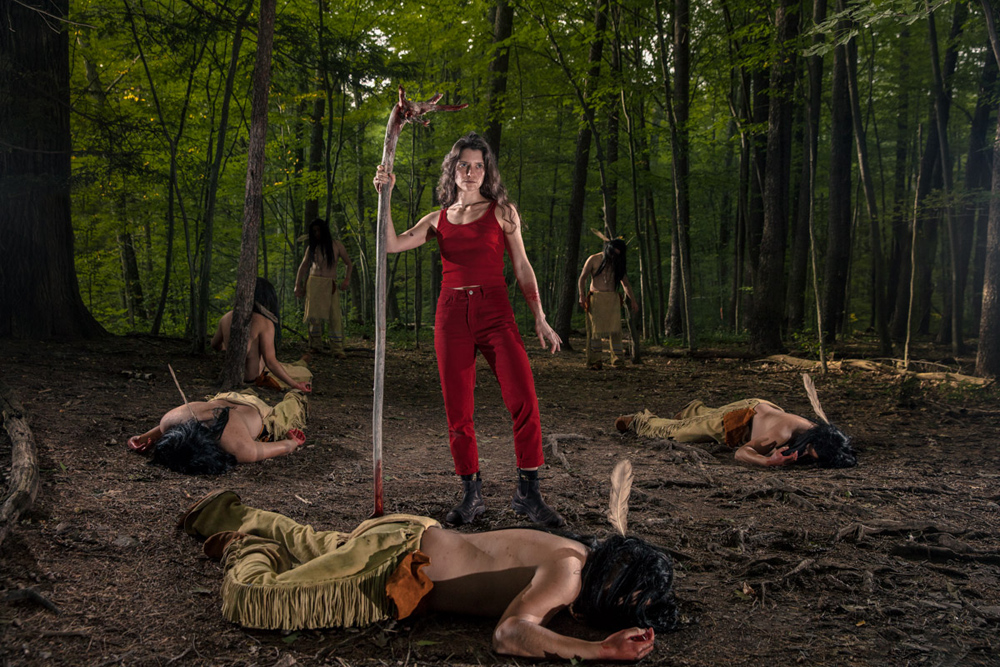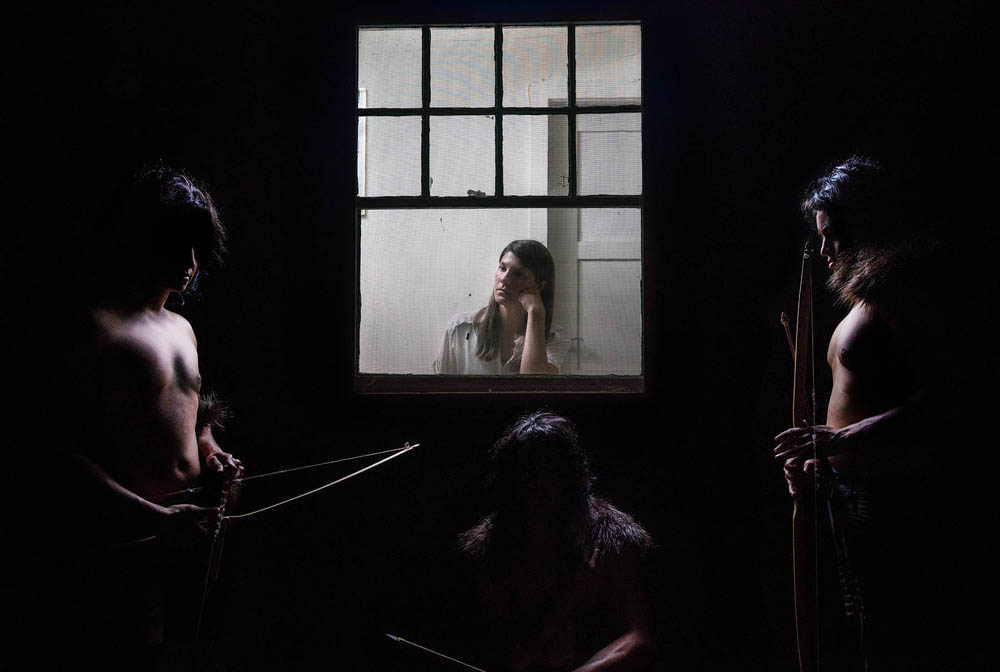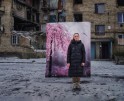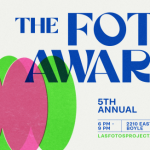Jeremy Dennis: Finalist in the 2019 Aftermath Grant
The Aftermath Project is a non-profit organization committed to telling the other half of the story of conflict — the story of what it takes for individuals to learn to live again, to rebuild destroyed lives and homes, to restore civil societies, to address the lingering wounds of war while struggling to create new avenues for peace. The Aftermath Project holds a yearly grant competition open to working photographers worldwide covering the aftermath of conflict. A 2019 finalist is photographer Jeremy Dennis. The jurors for this year’s grant were Aftermath founder Sara Terry; photographer, writer and founder of The Candid Frame, Ibarionex Perello; Aline Smithson, photographer and editor of Lenscratch; and Todd J. Tubutis, Associate Director at Sheldon Museum of Art, soon to be Director at the Art Museum of West Virginia University.
At the time of this writing, in January 2019, the U.S. government is partially shut down due to an apparently intractable impasse about the necessity for a wall protecting the country’s southern border with Mexico. At the core of this immobilizing issue is a debate about the true nature of border conditions, with those in favor of a wall firmly believing that there is a mass of violent, unlawful outsiders menacing the safety and security of US citizens. The other side asserts that such a crisis is manufactured, and any declared emergency is founded on anecdote and exaggerated facts. This current crisis unsettlingly aligns with a historical trajectory of similar populist fears where the oppressed rise up and threaten established social order. Noam Chomsky is one scholar who has traced the lineage of such terrors, going back to the earliest days of this country—]the perceived threat of indigenous peoples to the newly arrived colonists—and whose words photographer Jeremy Dennis has stated served as inspiration for his series, Rise.
A registered member of the Shinnecock Indian Nation, Dennis deftly taps into the current zombie motif enjoying wildly popular success across various entertainment platforms. In his staged photographs, Dennis substitutes the gory zombie with a savage American Indian figure “whose simple presence causes terror.” He continues, “Rise approaches the concept of a future complicated perspective of military land deed neutrality, cultural assimilation, and as a people hiding in plain sight … an imagined future uprising based on the aftermath of colonization, steeped in both the popular imagination of non-indigenous people and the repressed desires of Native Communities to one day retake their territory.”
His tableaux of confrontations between natives and non-natives demonstrate the absurdity of just such an uprising – especially given the fear is represented by an Edward Curtis-era image of what an American Indian looks like: surely, that person doesn’t exist! Yet, in fact, they do: Dennis himself is the stand-in. His earnest, hapless victims appear caught off guard by his very existence, absolutely unaware of the centuries of oppressing colonization that led them to befall their sudden fate. Rise therefore unsettles as much as it makes us laugh, and that is central to what compels us to keep untangling and reckoning the complications presented in his images. – Juror Todd J. Tubutis
Jeremy Dennis (b. 1990) is a contemporary fine art photographer and a tribal member of the Shinnecock Indian Nation in Southampton, NY. In his work, he explores indigenous identity, assimilation.
Dennis was one of 10 recipients of a 2016 Dreamstarter Grant from the national non-profit organization Running Strong for American Indian Youth. He was awarded $10,000 to pursue his project, On This Site, which uses photography and an interactive online map to showcase culturally significant Native American sites on Long Island, a topic of special meaning for Dennis, who was raised on the Shinnecock Nation Reservation. He also created a book and exhibition from this project. Most recently, Dennis received the Creative Bursar Award from Getty Images in 2018 to continue his series Stories.
In 2013, Dennis began working on the series, Stories—Indigenous Oral Stories, Dreams and Myths. Inspired by North American indigenous stories, the artist staged supernatural images that transform these myths and legends to depictions of an actual experience in a photograph.
Residencies: Yaddo (2019, Byrdcliffe Artist Colony (2017), North Mountain Residency, Shanghai, WV (2018), MDOC Storytellers’ Institute, Saratoga Springs, NY (2018). Eyes on Main Street Residency & Festival, Wilson, NC (2018), Watermill Center, Watermill, NY (2017) and the Vermont Studio Center hosted by the Harpo Foundation (2016).
He has been part of several group and solo exhibitions, including Stories—Dreams, Myths, and Experiences, for The Parrish Art Museum’s Road Show (2018), Stories, From Where We Came, The Department of Art Gallery, Stony Brook University (2018); Trees Also Speak, Amelie A. Wallace Gallery, SUNY College at Old Westbury, NY (2018); Nothing Happened Here, Flecker Gallery at Suffolk County Community College, Selden, NY (2018); On This Site: Indigenous People of Suffolk County, Suffolk County Historical Society, Riverhead, NY (2017); Pauppukkeewis, Zoller Gallery, State College, PA (2016); and Dreams, Tabler Gallery, Stony Brook, NY (2012).
Dennis holds an MFA from Pennsylvania State University, State College, PA, and a BA in Studio Art from Stony Brook University, NY.
Currently living and working in Southampton, New York on the Shinnecock Indian Reservation.
RISE
‘Rise’ reflects upon the ongoing subtle fear of indigenous people in the United States. Fear, in this instance, may come from acknowledging our presence, not as an extinct people, but as sovereign nations who have witnessed and endured the process of colonization for hundreds of years and remain oppressed.
This series reflects upon the inherent fear that one day – oppressed groups may rise and defend themselves. As an indigenous tribal member who has observed the aftermath of colonization and followed my curiosity in the story of survival, especially as a Federally Recognized tribe east of the Mississippi, Rise approaches the concept of a future Native American uprising from a complicated perspective of military and land deed neutrality, cultural assimilation, and as a people hiding in plain sight.
With the rise of the zombie motif in popular culture, the zombie may be interpreted as the great celebratory enemy, replacing the American Indian. Thus, Rise appropriates the aesthetic and concept of zombie apocalypse by replacing the gory zombie figure with the American Indian, whose simple presence causes terror.
The images reflect my interpretation of an imagined future uprising based on the aftermath of colonization, steeped in both the popular imagination of non-indigenous people and the repressed desires of Native Communities to one day retake their territory. In the end, my personal belief is that Americans and Native Americans will never have another great war, but the fear non-the-less exists and this project confronts it by mixing the fear with humor once realized.
Rise was originally conceived after reading a lecture transcription by MIT Professor Noam Chomsky found here. – Jeremy Dennis
Posts on Lenscratch may not be reproduced without the permission of the Lenscratch staff and the photographer.
Recommended
-
The International Women in Photo Association Awards: Lorraine Turci: The Resilience of the CrowMarch 16th, 2024
-
The International Women in Photo Awards: Natalia Garbu: Moldova LookbookMarch 15th, 2024
-
The International Women in Photo Association Awards: Rayito Flores Pelcastre: Chirping of CricketsMarch 14th, 2024
-
The International Women in Photo Association Awards: Alena Grom: Stolen SpringMarch 13th, 2024
-
The International Women in Photo Association Awards: Louise Amelie: What Does Migration Mean for those who Stay BehindMarch 12th, 2024

















































































